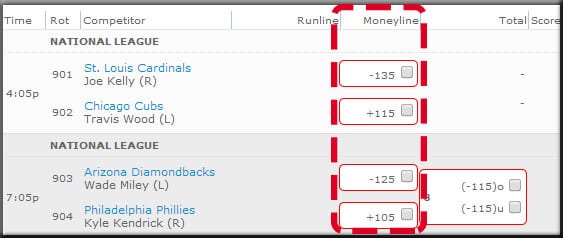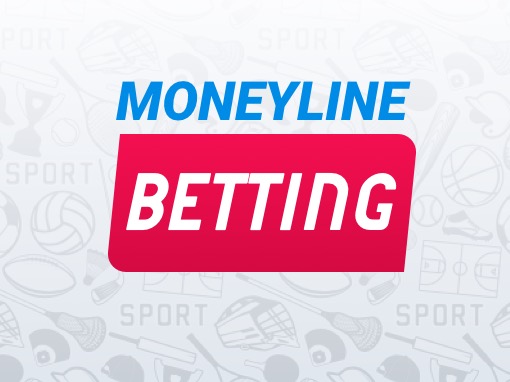Moneyline Explained
- Football Money Line Explained
- Sports Betting Money Line Explained
- Moneyline
- Money Line Explained
- Moneyline Explanation

What is a Money Line or Straight Up Wager?
One of the most common types of sports betting lines when wagering on a game is the moneyline. You will see moneyline odds for every game and every sport played for the most part. While some games that have a very large spread but stray away from offering a moneyline, it is still one of the most popular styles of betting. Sep 11, 2018 Simply put, a moneyline tells you how much you have to wager in order to make a profit of $100. Consider a hypothetical baseball game between the Chicago Cubs and the Los Angeles Dodgers. When looking at the moneyline for the game, a bettor will see something like this: Chicago Cubs +120. Los Angeles Dodgers -130. A moneyline bet is picking which team will win a game. There is no spread or line associated with this bet, although the odds and payouts will alter based on which team is the favorite or perceived better team. But at it's core, all you have to do is pick who wins. What Are Moneyline Odds?

A Money Line or straight up wager is a bet on the outright winner of the game or event, without any point spread odds. A Money Line better doesn't have to worry about a team winning or losing by a certain number of points.
Oddsmakers still determine a favorite and an underdog by the overall strength of the competitor, but the odds given are based on the amount of money that needs to be put up in order to place the bet.
Example:
The bettor will receive odds that resemble these:
Colts –140
Bears +120
The (-) symbolizes which team is the favorite and the (+) indicates which team is the underdog. So in the above example, the Colts are the favorite and the Bears are the underdog. All the bettor is wagering on is who he or she thinks will win the game.
If one were to bet on the Colts, he or she would have to risk $140 to win $100 (or $105 to win $75; $70 to win $50, etc). If one were to bet on the Bears, he or she would only have to risk $83.33 to win $100 (or $62.50 to win $75; $41.67 to win $50, etc).

So while the Colts are the favorite to win the game, one would have to risk more money if they wanted to bet on them.

The point spread is such a ubiquitous part of sports gambling that it has become fodder for pundits and fans who would never place a wager. “Notre Dame is giving up 6 points to USC,” someone might say. “I didn’t know that USC was looking that good this year.”
Instead of judging whether they think the numbers are correct or misguided, people are more likely to simply accept what Vegas has to say. The spread becomes just another prediction.
Baseball wagering is unique in that there is no traditional point spread set for a ballgame. Instead, sportsbooks focus on run totals, the run line, and, most commonly, the money line (ML).
When you wager on the ML, you are picking who you think will win the contest outright. It doesn’t matter how many runs a team scores or how many runs they win by, they just need to score more than their opponent.
Football Money Line Explained
This, of course, comes with a catch. A sportsbook is not going to give the same odds to win between a division-leading team with their best starter on the mound and a team at the bottom of the division throwing a bottom-of-the-rotation pitcher.
How to Read MLB Baseball Money Lines – Basic Explanation & Definition
What oddsmakers do in lieu of the point spread is to weigh the moneyline with heavier odds on the favorite. This is an example of what the numbers on a typical ballgame might look like:
- Texas Rangers (-150)
- Oakland A’s (+130)
The Rangers are projected to prevail. The favorite in the match-up will always be the negative (-) number, while the underdog is always positive (+), just like the numbers work with point spreads.
The easiest way to factor the risk vs reward is in terms of $100. In the example above, the (-150) means that you’d need to risk $150 to win $100 on the Texas Rangers. This means if the Rangers prevail, you will be paid $100 (plus your initial $150 investment), however, if the Rangers lose, you lose $150. You must increase the amount you risk on Texas because they are handicapped as the team most likely to take the game.
As for the A’s, at (+130), that number tells you that you can risk $100 to win $130 on them. A winning wager on Oakland gives you $130 (plus you’ll get back the $100 you bet), while a losing bet on the A’s would only cost you $100.
Learn About Baseball Line Prices: Dime Line vs 20 Cent Line
In the example above, and at most sportsbooks, you’ll have what is called a 20 cent line. All that this means is that the absolute value of the favorite price is 20 cents more than the underdog price (150 – 130 = 20). With reduced juice or dime line odds, you’ll get a 10 cent difference. On the very same game, a dime line book like 5Dimes would set the prices at -140 and +130 (140 – 130 = 10). This definitely gives you an edge simply because it takes away some of the built-in vig the book uses to calculate their odds. More on this to come.
Calculating Probability
When it comes to the money line can help to think in terms of probability. In other words, how likely is it that one team will beat the other? This is the foundation of baseball betting and is important to understand before really understanding the money line.
Convert Money Lines to Percentage
There are two formulas you will need to convert baseball betting lines into probability. The formula you use depends on whether the line is positive or negative.
Positive
Example: Money Line = +130
Negative
Example: Money Line = -150
Sports Betting Money Line Explained
Understanding Vig/Bookmaker Margin: Calculating the No-Vig Line
The astute bettor will notice right away that the probability on each side of an MLB game does not add up to 100%. This is because there is a built-in vig or edge for the bookmaker that helps them make their money. To get the true probability for each side of a game, you need to remove that edge.
Start by adding the two probabilities together. In our example, we had 43.5% + 60% = 103.5%; 103.5%. From the 103.5%, the 3.5% is the estimated vig on this pair of odds (some books do adjust differently on favorites versus underdogs, but we do not need to go into that in detail at this point). We can then take each percentage and divide it by the combined percentage to give us the true probability for each team.
In this matchup, the line tells you that in a fair (no vig) market the underdog has a 42% chance of winning and the favorite has a 58% of winning. This is relevant because as you start to make predictions, you will come up with your own probabilities for a matchup and compare them to the available odds to see whether or not your prediction has value based on these fair market odds.
How to Calculate MLB Baseball Moneylines for Betting Risk & Reward
If you aren’t betting exactly $100 per game, it’s easy to calculate your risk/reward by converting MLs to decimals and multiplying those numbers by your wager amount. A couple of examples:
- If the ML is (-134) and you want to wager enough to collect $35 on that team, you must convert the ML to -1.34 and multiply by $35, which equals $46.90; the amount that is needed to risk on a favorite of -(134) to win $35.
- If you’re looking to bet an underdog of (+172) and have $47 available for a wager, then calculate 1.72 x $47 = $80.25, which is the amount you could collect on a (+172) underdog with a $47 bet.
Using Major League Baseball Odds to Your Advantage
The great part about the ML is that when you bet on underdogs, you can decrease the percentage of games you need to pick correctly to show a profit. For example, if you wager on 100 games with an average line of (-130), you would need to score on 58% (58 of 100) of your bets just to turn a profit, betting $100 per game. You should be paid out $5,800, but lose $5,460 on these bets, giving you a total profit of $340.
Now, looking at a situation where you bet on mostly small underdogs, say an average line of (+115) over 100 bets, you would only need accuracy on about 47% of your picks (47 of 100) to show a profit. You should receive $5,405 in this case while losing $5,300, a profit of $105. Say you can up your winning percentage to 50% at an average money line of (+115). If you are able to do that, you should instead collect $5,750, while losing $5,000, a profit of $750.
Remember that pitching is still the ultimate factor in making your picks and predictions. But a club that recently won a low-scoring outing as a ‘dog is dangerous and almost never a bad wager. Once a team has proven it can small-ball grind its way to upsets of more talented clubs, they carry more value than a squad that got lucky with 5 homers against the Yankees.
Underdog Betting Equals Value In MLB Wagers
Moneyline
As you can see, winning bets on underdogs can add up quickly. Sportsbooks are, of course, well aware of this, but because most people lean toward favorites and not underdogs, they don’t really care. Like a grocery store putting its sweet snacks at toddler-eye level, the books know that some people are wise to their strategy – but enough of a % of shoppers won’t be. Don’t be taken advantage of. Take advantage!
There are few sure-fire handicapping systems that lead to sustained profit in any sport. NFL wagering, for instance, can be a supreme challenge due to its volatility and the sheer amount of action leveling out the lines. The NBA can be a bear due to “garbage time” and other factors that affect the Over/Under.
Money Line Explained
Not to say that a cash player can’t make money over time wagering on those sports, but when you find a system that is proven to work in a sport where lines can’t be adjusted too much (due to being set in the morning and paid off by night), then it’s never a bad idea to learn those tactics – even if you don’t always adhere to them.
Moneyline Explanation
The numbers above show that if managing to choose your picks on the diamond wisely and take as many high-value underdogs as you can, you will be well on your way to a profitable summer.